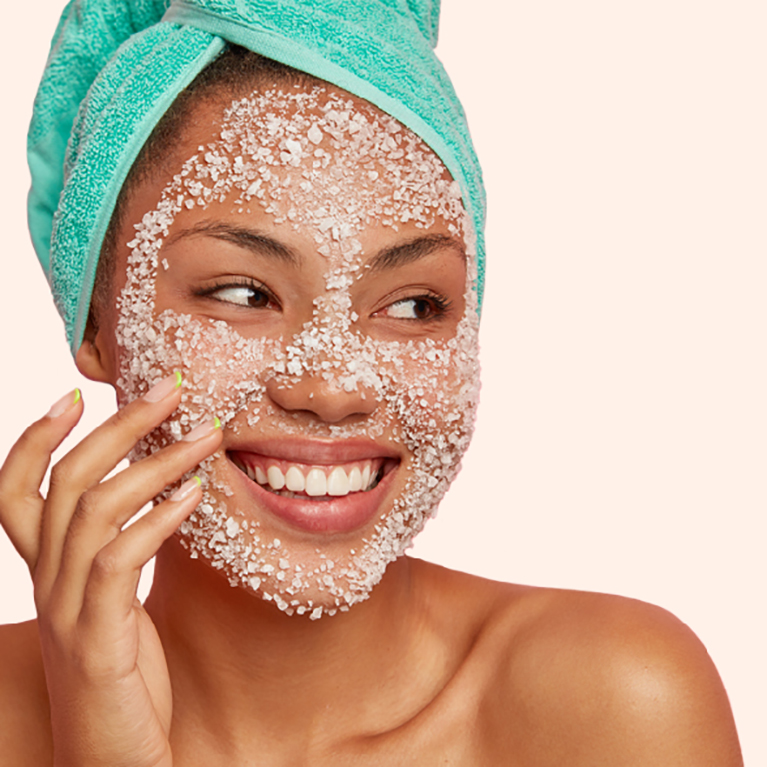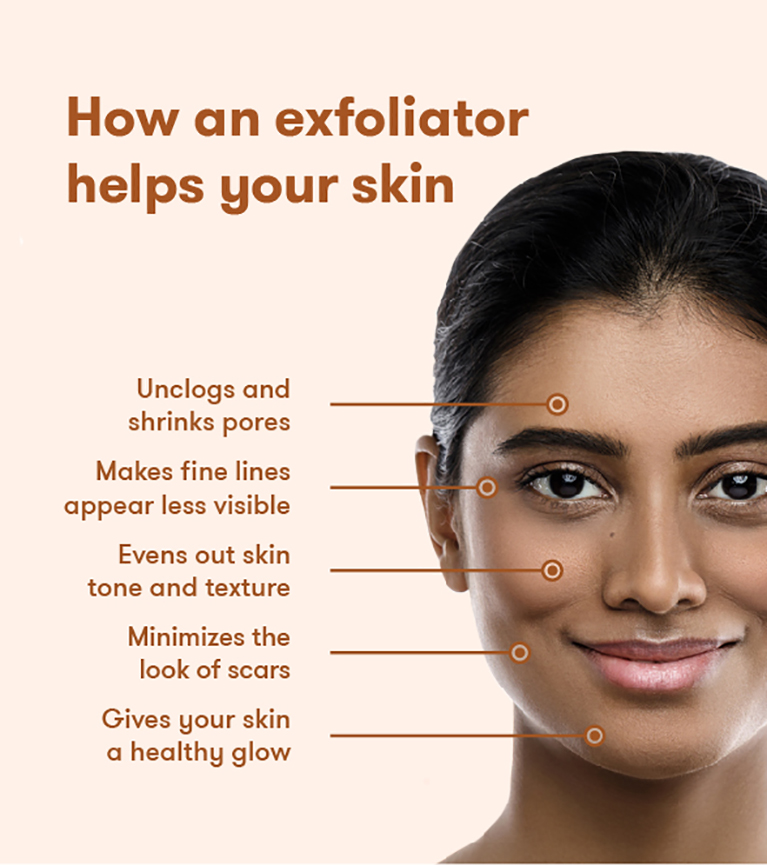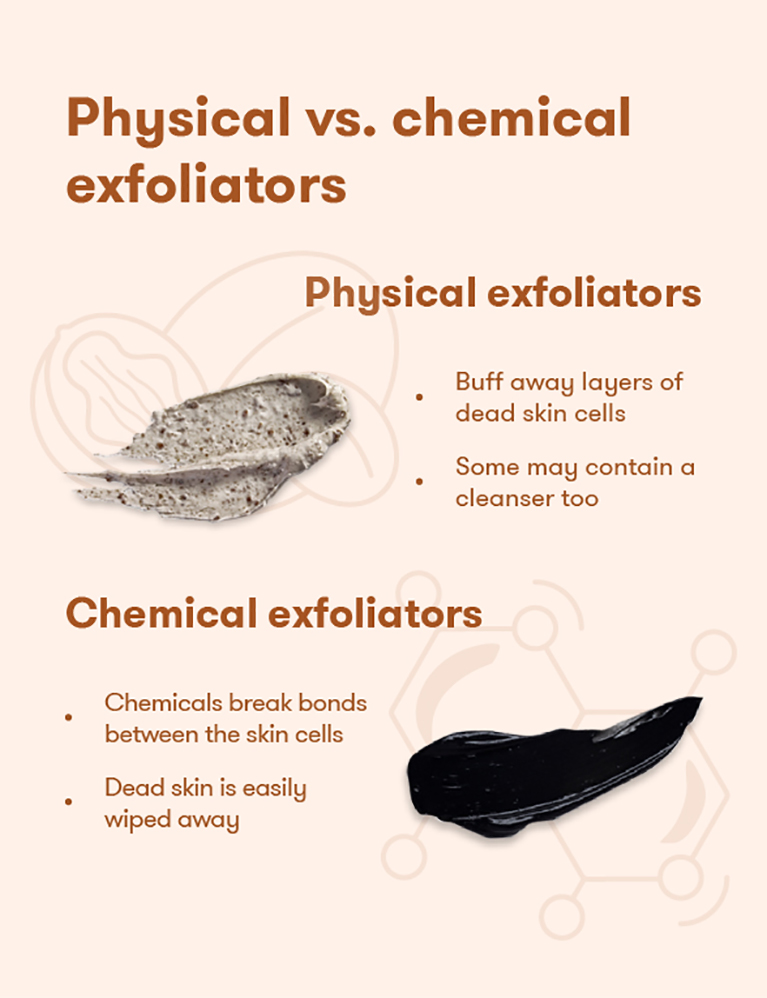Types of Exfoliators: Physical vs. Chemical
Wondering how to exfoliate? Skin reactions vary from person to person, so the way you use your product will depend on the type of exfoliating cleanser you choose. There are two types of solutions to explore—physical and chemical exfoliators.
Physical Exfoliators
You may hear of physical exfoliators referred to as manual exfoliators. These products contain ground grains or nuts that make it feel like you’re rubbing sand over your skin upon application. For most people, it’s more of a spa-like sensation than a day-at-the-beach feeling. Although, neither sounds horrible if you ask us.
When rubbed against your face, these particles help to buff away layers of dead skin cells. While it might feel slightly rough, your skin can feel smoother once the product is washed off. These products will vary in their ability to cleanse the skin depending on the ingredients they contain. That’s why we recommend looking for a product that incorporates both bamboo exfoliating grains and soothing aloe vera, like Glow Boss Cleanser + Exfoliator from Artistry Studio™. This two-in-one solution cleanses and exfoliates, saving you time in the morning and space in your makeup bag. The sulfate-surfactant-free cleanser and scrub improves smoothness and overall even tone and texture. Not to mention, it’s suitable for all skin types—whether you consider yours normal, oily, dry, or sensitive.
Chemical Exfoliators
Chemical exfoliating cleansers usually contain several different compounds bottled up in one product. There are often different enzymes, alpha hydroxy acids, beta hydroxy acids, and a bunch of other hard-to-read ingredients. But while they might be a mouthful, they can also be beneficial.
Here’s how chemical exfoliants work:
- Those hard-to-pronounce chemicals can break the bonds between skin cells.
- Once broken, the dead skin becomes loose, allowing you to wipe or scrub it away.
- Chemical exfoliators are often available in the form of a mask, a leave-on liquid formula, or an exfoliating pad.





